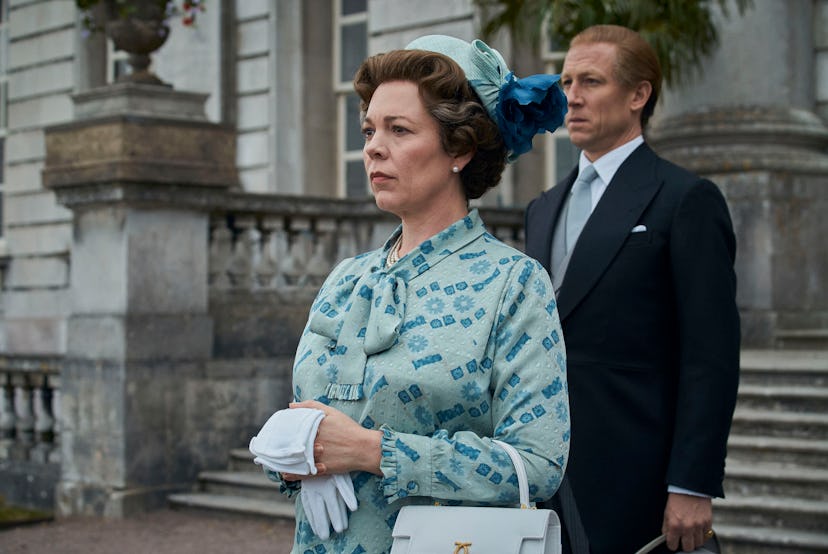The Crown Fact Check: Were the Queen’s Cousins Hidden in an Asylum?

It took coughing up blood in front of Queen Elizabeth II, but in episode seven of The Crown’s season four, Princess Margaret finally accepts that it’s time to change things up. She fails, but at the very least begins to see a therapist, who isn’t remotely surprised when Margaret shows up. “I am aware, through professional colleagues, of the sisters,” she tells Margaret, who looks puzzled: “What sisters?”
If you’re wondering to whom she’s referring, so was Margaret. The quest that follows is a classic fictional TV subplot: Margaret, along with the Queen, discover that two of their long-dead first cousins are actually very much alive. They even live nearby, with three more of their blood relatives—at Royal Earlswood Hospital, a state-funded mental institution formerly known as The Asylum for Idiots and Imbeciles.
In 1987, the public made the same discovery in real life; the Daily Express reported that Nerissa had been buried the year prior in a pauper’s grave marked only by a serial number and plastic name tag. “We have no comment about it at all,” Buckingham Palace said at the time. “It is a matter for the Bowes-Lyon family.” And it has largely remained so, even though Katherine died surprisingly recently, at the age of 87 in 2014.
The pauper’s grave of Nerissa Bowes-Lyon at Redhill Cemetery, marked by a small plastic tag at the foot of the headstone.
None of this was a revelation to the Queen Mother, both on-screen and presumably IRL. Nerissa and Katherine were the daughters of her brother, John Bowes-Lyon, making them her nieces. As for why the family didn’t “behave like human beings,” as Helena Bonham Carter’s Margaret puts it, Victoria Carter’s Queen Mother insists that they “had no choice.” Nerissa and Katherine, whom the family declared dead in 1940, were severely disabled. So were three of the Queen Mother’s cousins: Rosemary, Etheldreda, and Ideona, who were admitted to Royal Earlswood on the same day.
At least in The Crown, the Queen Mother blamed it all on the abdication of Edward VIII in 1936, at which point she became Queen. Seemingly overnight, she explains, “my family, the Bowes-Lyon, went from being minor Scottish aristocrats to having a direct bloodline to the Crown.” And that, she continues, “resulted in the children of my brother paying a terrible price.”
It’s impossible to know whether or not the Queen Mother really used the wording “professionally diagnosed idiocy and imbecility” in her explanation of Nerissa and Katherine’s threat to the family. But she certainly does on the show, much to Margaret’s apparent disgust. “The hereditary principle already hangs by such a precarious thread. Throw in mental illness and it’s over,” the Queen Mother says. “The idea that one family alone has the automatic birthright to the Crown is already so hard to justify. The gene pool of that family better have 100 percent purity.” (And it doesn’t, according to her; she also cites the case of King George III, who was thought to have bipolar disorder.)
The Royal Earlswood Hospital in Redhill, Surrey.
With all that in mind, Margaret returns to her therapist, beseeching her to tell her the truth: “Am I destined to be mad, too?” She isn’t, according to the therapist’s research. It turns out the recessive gene in question came from her cousins’ common maternal grandfather, Charlies Trefusis, 21st Baron Clinton. It was Fenella, born Fenella Clinton, who brought it to the Bowes-Lyon family, meaning it never passed to the Queen Mother or anyone else in the direct bloodline.
So, Margaret concludes, “what my family did was unforgivable.” She wakes up the next day looking distraught, but it isn’t long before she’s back to joking about her therapy sessions and giving up alcohol. In fact, neither of the five family members are ever mentioned in the series again.
In real life, there’s no evidence that Margaret ever even contacted her cousins before she died in 2002—12 years before Katherine. As for Queen Elizabeth II and the Queen Mother, the only development in the years since has been that they “failed to attend” a meeting to discuss Katherine’s future before Royal Earlswood closed in 1977. It’s unclear how she spent the next 18 years of her life, but the hospital grounds are known to now house luxury apartments and a gated community with a golf course.
Related: Princess Margaret’s Morning Routine Proves She Was Really a Queen